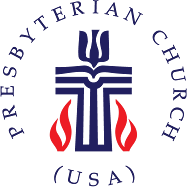
Here are the passages for September 27th, 2009, the Twenty-Sixth Sunday in Ordinary Time (Year B). All lectionary links are to the NRSV via the PC(USA) Devotions and Readings website, but if you prefer another translation, feel free to use that instead. (Other references are linked to the NRSV via the oremus Bible Browser.)
Esther 7:1-6, 9-10, 9:20-22
- The Revised Common Lectionary is organized in such a way that Sunday readings are spread out over a three-year cycle, giving representation to all the various parts of Scripture. Unfortunately, this means that, if the Sunday lectionary readings were all that a reader knew of the Bible, about 90% of the Old Testament would be missed entirely. In the case of the book of Esther, this Sunday is the only time in the cycle that Esther is used, so if a pastor chooses to preach on this passage, the odds are they'll give a brief synopsis of the rest of the book.
- While I don’t want to summarize the entire story here, one important element that is not included in the reading is that Esther had to risk her life to meet with the King on her own initiative. Generally speaking, it was the King who had to initiate any communication, even with one of his own wives such as Esther. Esther found the courage to risk death when her uncle Mordecai told her of Haman’s plans to exterminate the Jews, and we see what happens as a result. I would especially recommend reading Esther chapter 4 to get this context, but if Esther is not a book you’re familiar with, you might want to read through the whole book at another time to get the whole story.
- Esther has the unique distinction of being the only book in the Bible that does not ever mention God. Since the Bible is the basis for our religious faith, why do you think such a book was included? What does God want to teach us through this story?
James 5:13-20
- This is the end of James’ letter, but it doesn’t really end like most biblical letters end. Usually, letters end with a kind of “send off,” like “The grace of our Lord Jesus Christ be with you all. Amen.” James’ letter doesn’t have anything like that. It just kind of… stops. Why is that?
- Most of this passage is an invitation for Christians to pray for their needs. Some questions to consider: What kinds of needs have you brought to God? Do you feel that God has answered your prayers in ways consistent with what James says? How do you respond to this passage? Similarly, how do you respond to James’ last word encouraging Christians to turn sinners away from error? How does this advice connect to James’ words on prayer?
- I often like to point out that this is one of pair of stories in the Gospels that have what appear, at least at first glance, to be conflicting messages. In this one, Jesus tells his disciples that “whoever is not against us is for us.” The other (not accounting for the parallel passage in Luke) contains Matthew 12:30, which begins “whoever is not with me is against me.” Is there anything about the context of these passages which can allow these seemingly contradictory ideas to be reconciled?
- Focusing back on Mark’s text, what does Jesus’ words have to say to us about how we respond to Christians of denominations that differ with what we have been taught to believe, even on important issues? How about non-Christians? What would it mean for someone to do something in Jesus’ name as described here?
- Starting in verse 42, we move to a new story (at least, judging from the fact that the Lukan parallel is not in chapter 9, but rather in chapter 17!). Does the fact that different gospels choose to arrange these stories so differently have any significance?
- Jesus refers to “little ones,” and I can’t help but think that Mark believes that Jesus is talking about children such as the one he referred to in verses 36 and 37, which was read last week. Is this a correct interpretation? (The parallel passage in Matthew 18:5-6 would indicate so, but the parallel passage in Luke chapter 17 does not indicate children at all. Again, is the fact that the gospel writers made such distinct choices significant?)
- If Mark is referencing children here, this would suggest that the part in between these passages about how the disciples should respond to the man driving out demons is connected to the overall narrative. How might such a connection influence our interpretation of this passage?
- Finally, Jesus has some rather serious instructions to give to his followers about what they should do to avoid “stumbling” and causing others to stumble. There is some debate as to whether Jesus intended his followers to take these instructions, such as the ones to cut off body parts, literally, or as a kind of hyperbole illustrating just how seriously we should seek to avoid sin. How should we apply such instructions to our own lives? And what does it mean to “have salt in [ourselves]”? How about this language of being "salted with fire"? What might such a strange turn of phrase mean?








No comments:
Post a Comment